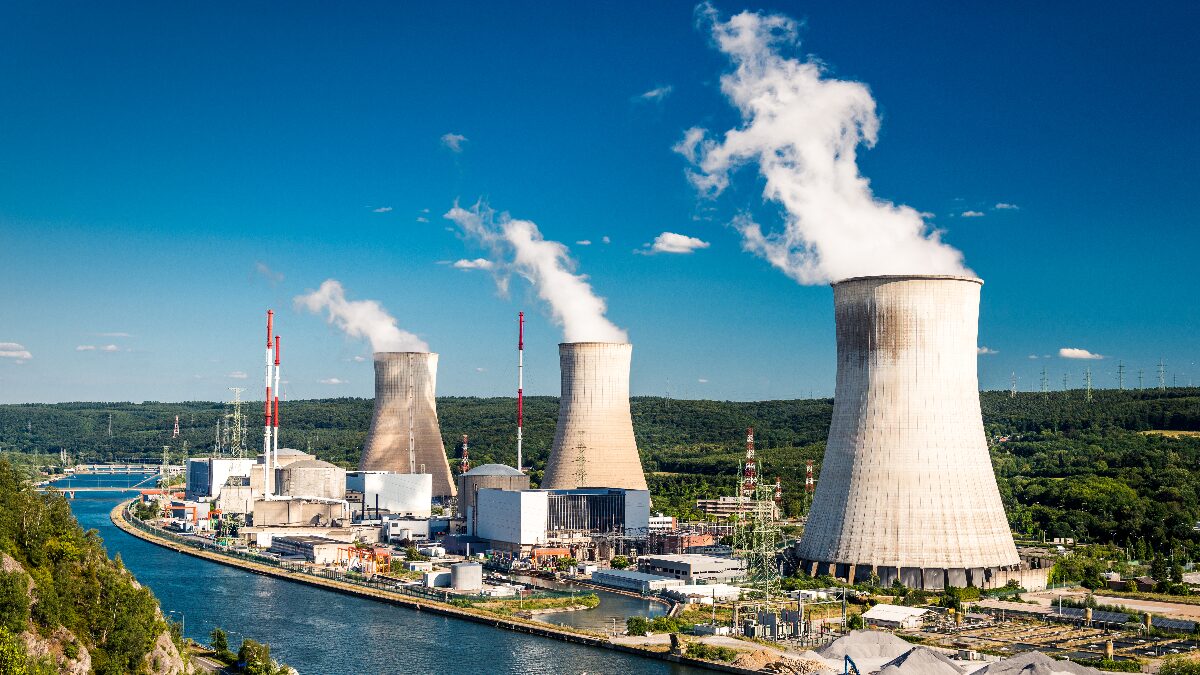Are we moving back into a uranium bull market?

Uranium sentiment is back on the up and analysts think spot prices could lift quickly. Pic: Getty Images
- Spot uranium prices have rebounded close to 20% of their March lows
- Analysts think they could move higher and quickly as utilities return to contracting
- A number of ASX stocks could be in line to benefit when prices surge
Voices are growing louder from experts in the commodities game that the sold-off uranium sector has turned a corner.
Since hitting a 17-year-high of US$107/lb in January 2024, the spot price of uranium reversed into a sharp decline, hitting a nadir at US$63.45/lb on March 17 as Donald Trump’s eccentric economic policies pulled buyers out of the market.
But a sharp uptick since has seen spot U3O8 rally over 10% to US$71.25/lb. Term prices based on the contracts between utilities and miners under which most yellowcake is actually sold has spent months in and around the US$80/lb mark.
That’s good for uranium stocks, whose sell-off last year was far more severe than the commodity price.
Canaccord Genuity analysts said in a note yesterday that equities had rallied 19% in the past month, taking YTD runs for producer and developers to a respective +12% and +15%.
To them, equities are priced at ‘near beginning-of-cycle valuations’ at a time the market is turning back towards risk.
“Utilities stepped away from the market when spot prices were well above term and were slow to re-enter the market, seeing how low it would go,” they said.
“However, this decline was short-lived; spot has since rebounded 11% to US$70.50/lb, supported by increased liquidity and a string of consecutive price increases. In our view, this recovery has not yet been fully reflected in equity valuations, which remain at historic discounts to long-term price.”
How much material is left in the spot market? The lightly traded section of the sector has seen increased liquidity this year, with “carry trades” hitting 4Mlb, an annualised rate of 10Mlb.
Compared to rates of 3-5Mlb seen over the past year, that’s significant. Traders are now taking 50% of spot purchases, but utilities hoping to snag a bargain have also been big buyers, picking up 75% of the spot volumes they consumed in all of 2024.
Demand story
So demand for the material is there, and the arbitrage between contracted and spot volumes has been closing.
Longer term, there are foundations for a breakout, Canaccord says. The brokerage thinks primary supply is fragile, while reactor builds in China will accelerate demand growth alongside the extension of existing nuclear facilities in the West.
Inventories are now low, while higher costs mean incentive prices are climbing in the direction of US$100/lb if crucial new supply is to come online.
And contracting has been lagging, falling well below replacement rates – i.e. the uranium market is running deficits that will continue to accumulate.
“With the base-escalated term price stable around US$80/lb for nearly a year, the stage is set for the next leg up. Several large utility RFPs are expected in the second half of 2025, and the easing of geopolitical uncertainties (notably US-Russia relations and improved China-US dialogue) is likely to spur renewed contracting interest,” CG’s team says.
“We believe the sector’s historical pattern of sharp price moves following periods of stability suggests that a breakout could be imminent. We await the catalyst that will spur utilities, yet we note that pressure is building.”
They’re not the only experts to feel this way.
Perth broker Argonaut and its sector analyst Jon Scholtz have tipped spot prices will rally to US$100/lb by the end of 2025.
“Uranium spot price and related equities have been under pressure, however a turn in sentiment recently has driven a more positive outlook for uranium pricing and we note that there are multiple catalysts for uranium equities in the near-term,” he said in a note this month.
“These catalysts include: additional demand from data centres and AI, lift in spot pricing driven by producers covering contract books and financial players buying pounds, a close out of shorts; and FID decisions for uranium developers.
“We maintain our positive outlook and forecast spot uranium prices to rally to US$100/lb by end CY25.”
CG likes heftier ASX names like Paladin Energy (ASX:PDN) and Silex Systems (ASX:SLX); alongside Paladin, Argonaut fancies Boss Energy (ASX:BOE) as a producer and NexGen Energy (ASX:NXG) and Bannerman Energy (ASX:BMN) as development plays.
But there are a host of even smaller capped uranium developers and explorers who offer potentially greater upside should the uranium cycle truly turn bullish in the latter half of the year.
Check out these junior uranium names
That optimism is flowing down to smaller developers like Aura Energy (ASX:AEE), currently negotiating finance for its 2Mlbpa Tiris mine in Mauritania, West Africa.
MD Andrew Grove told Stockhead’s Tylah Tully last week, with short positions in the larger players like Boss having to unwind, we should see a significant rerating of uranium companies.
“I’m very bullish obviously. If you just look at the market, it’s been depressed for a little bit. The spot price went down to about $60,” he also noted.
“It’s come up to $71 or thereabouts today, but the long-term price, which is 85% of the contracting, has been flat at $80.
“The people who really buy the uranium, the nuclear power generators, are still seeing that $80 plus is the price they’ve going to pay.”
Aura holds a spec buy rating from Argonaut and a 30c price target from the broker, well above the $95m capped developer’s current 11c a share price.
Grove says uranium prices should be moving higher than we see today.
“I’m also very bullish on the markets,” he said. “We’re seeing very strong demand for nuclear power as a baseload, low carbon footprint energy.
“We’re seeing commitments, particularly from China and the US in terms of really strong growth in nuclear power. And on the supply side, we’re seeing delays in production. We’re seeing ramp up issues.
“I think the mid-long-term forecast for supply and demand sees a deficit in production. And it should reflect in uranium price and in the stock market there afterwards.”
At a capital cost of just US$230m, Tiris is likely to come online faster than larger but more complex and costly developments in Canada’s Athabasca Basin, which despite its high grades will be slow to respond to market signals as prices rise.
Also operating in Africa, in the premier uranium jurisdiction on the continent Namibia, Elevate Uranium (ASX:EL8) is setting up its 66Mlb Koppies project and complementary proprietary process tech U-pgrade for the next boom.
Its boss Murray Hill says it’s a ‘no brainer’ that nuclear energy demand will go up as countries demand baseload generation with lower carbon emissions, especially as demand for energy accelerates from the rollout of generative AI models by tech giants.
“The only way to incentivise new production is for the uranium price to go up. So I can see the uranium price going US$150/lb comfortably in the shortish term, particularly when the utilities realise,” he said.
“You saw back in 2007 the price just went stupid, pretty quickly. Utilities are all listening to a CEO saying we’re going to produce uranium in a short period of time, it’s not happening.
“It’s taking longer. So when they realise the uranium is not there they’re going have to do something. The worst thing they can do is run out of fuel because uranium is the only fuel for their reactors.
“They’re not going to care what they pay for the fuel, because it’s only, what, 4 or 5% of the total cost of (nuclear energy generation).”
Uranium explorers perk up
The rebounding uranium price is bringing sentiment into brighter territory for earlier stage explorers.
GTI Energy (ASX:GTR), for instance, is ramping up activities at its Lo Herma ISR project in Wyoming as the new US administration under President Donald Trump is encouraging miners to ramp up domestic production.
Energy security, and particularly nuclear energy security, is a key concern given the dominant role Russian enriched uranium plays in the current nuclear supply chain in the States.
GTI hosts 8.57Mlb of U3O8 with 32% in the indicated category.
Expansion drilling is due in the second half of 2025 to expand the resource beyond a target 10Mlb, with a scoping study due this quarter.
GTR’s assets sit in a highly sought after region near Cameco’s Smith Ranch plant and Rio Tinto’s Sweetwater Mill, the subject of a US$175m acquisition by UEC.
Over in Australia there remain a number of explorers working to follow companies like Boss into production, in spite of inconsistent rules around uranium across its states and territories.
Greenvale Energy (ASX:GRV), which on Monday announced the appointment of Alex Cheeseman as CEO, recently announced a string of anomalies at its Jindare and Henbury projects in the NT, one of the few regions in Australia to approved uranium mining.
A field program at the recently acquired Oasis project in Queensland is also due to begin in early June.
At Stockhead we tell it like it is. While Aura Energy, Elevate Uranium, Greenvale Energy and GTI Energy are Stockhead advertisers, they did not sponsor this article.

UNLOCK INSIGHTS
Discover the untold stories of emerging ASX stocks.
Daily news and expert analysis, it's free to subscribe.
By proceeding, you confirm you understand that we handle personal information in accordance with our Privacy Policy.








